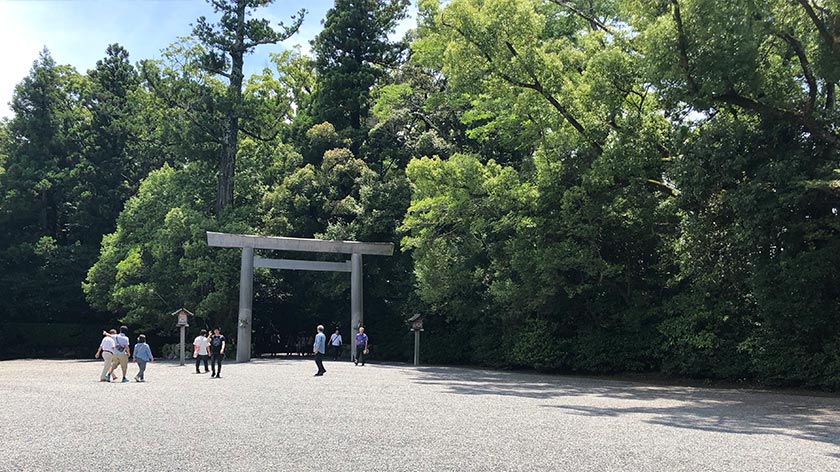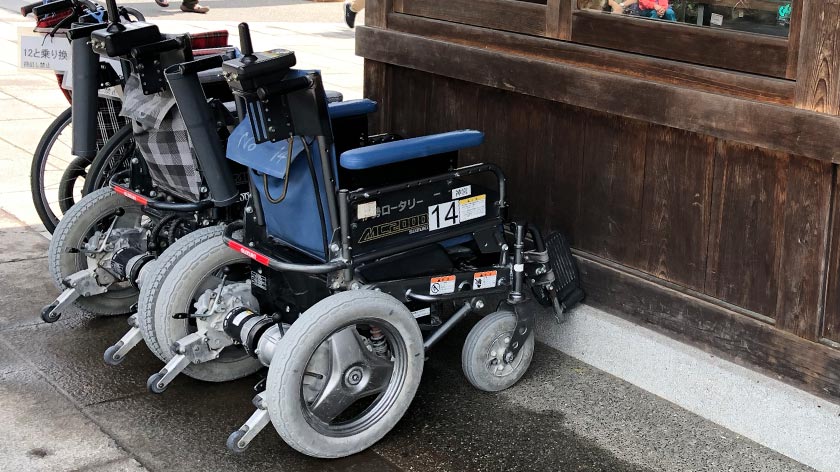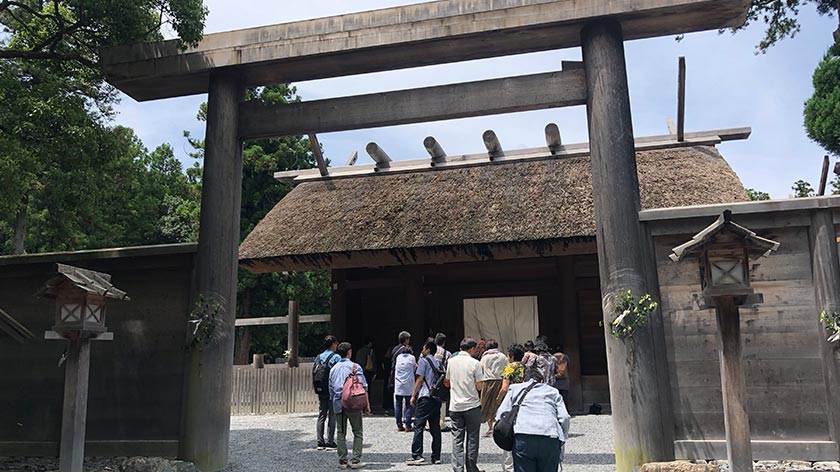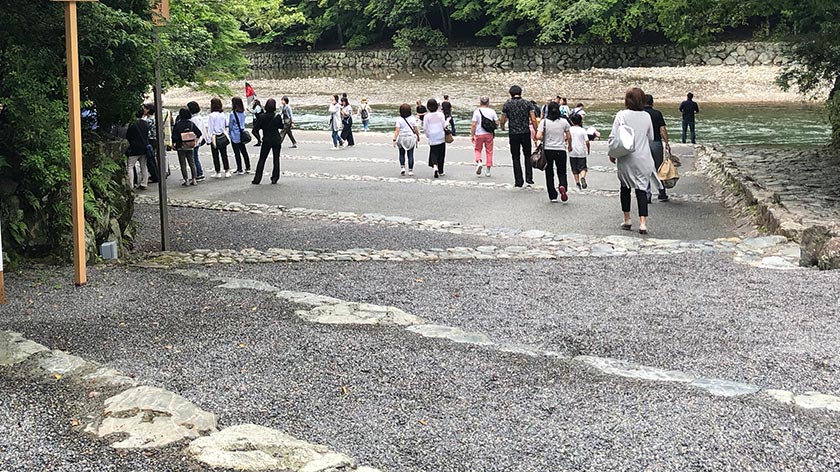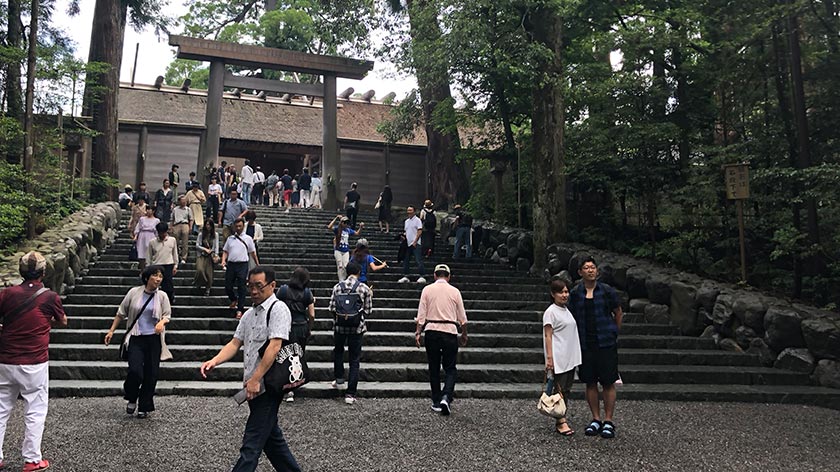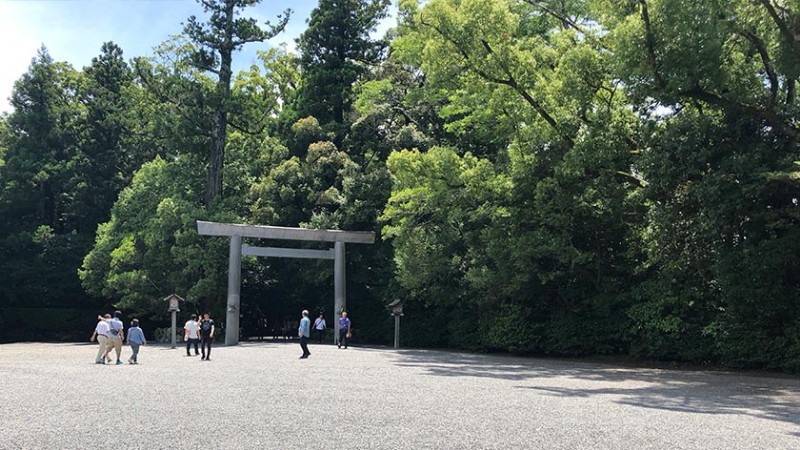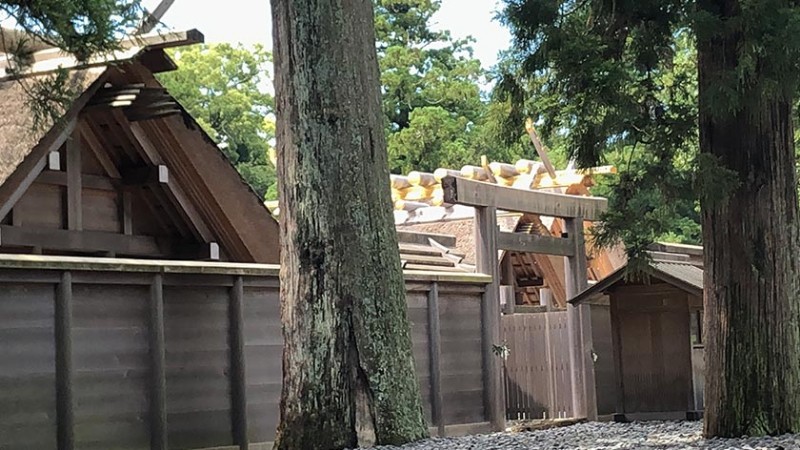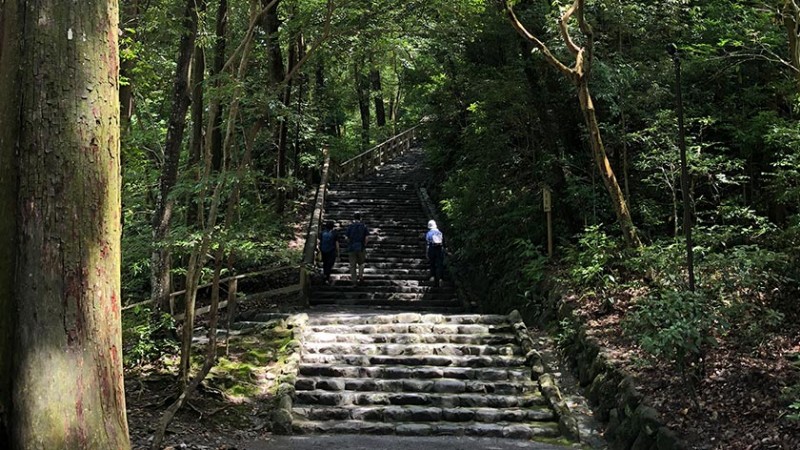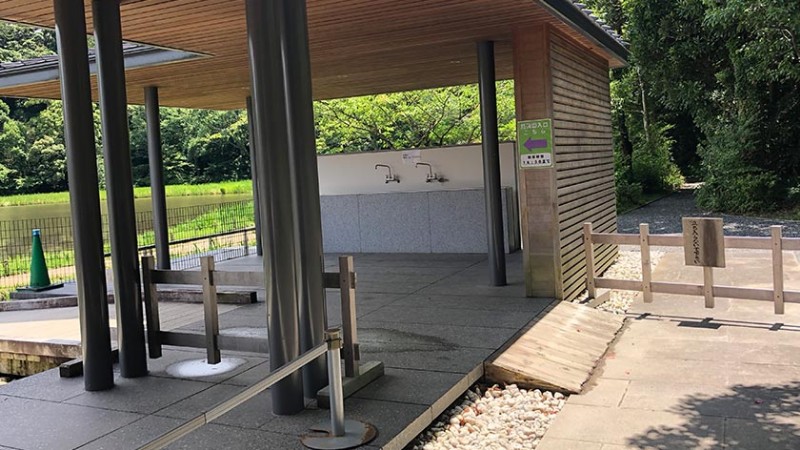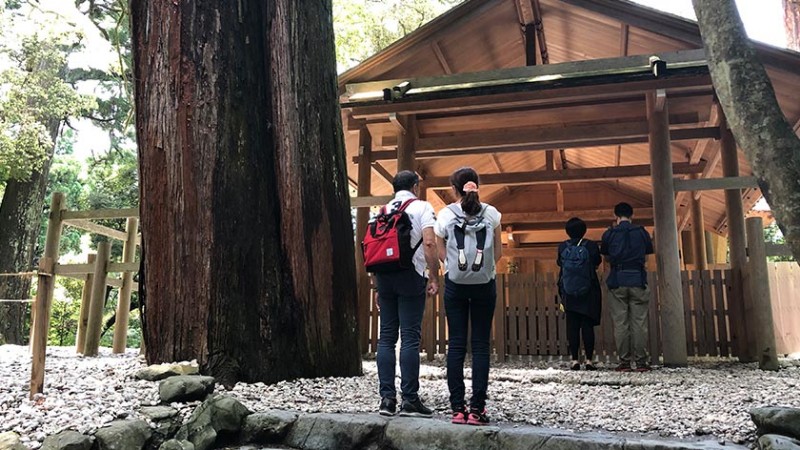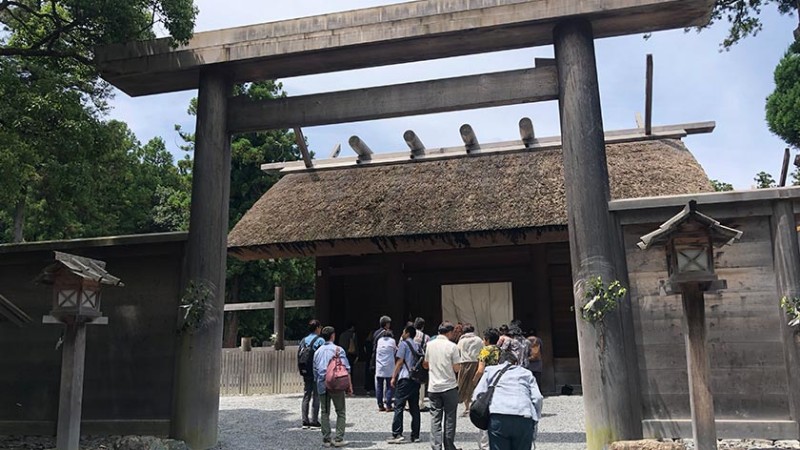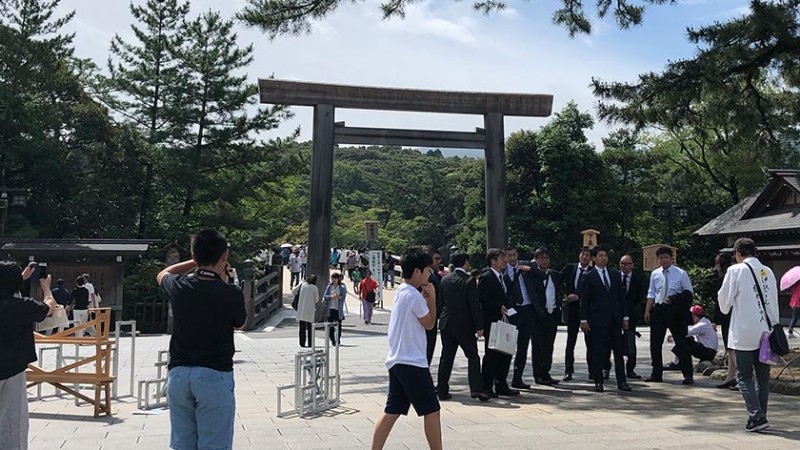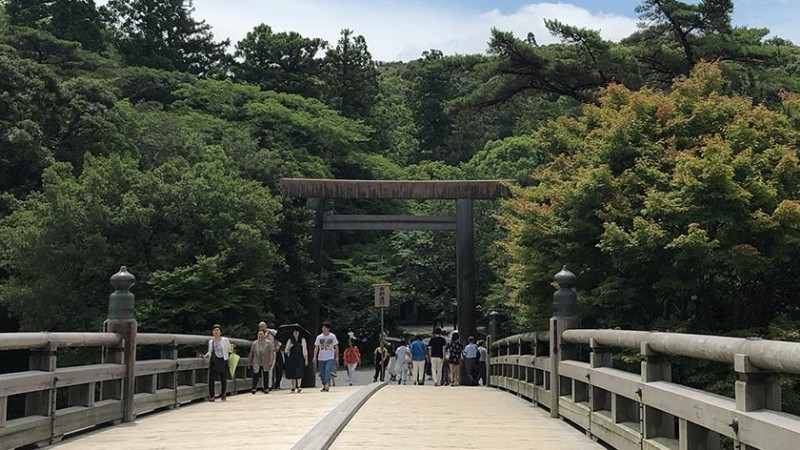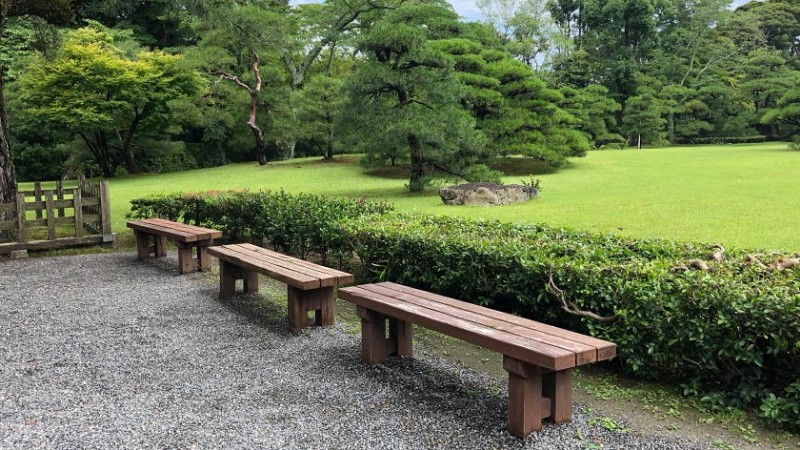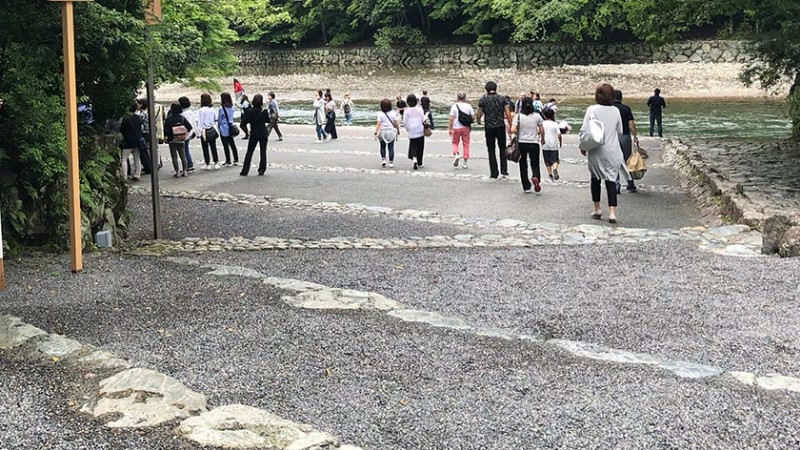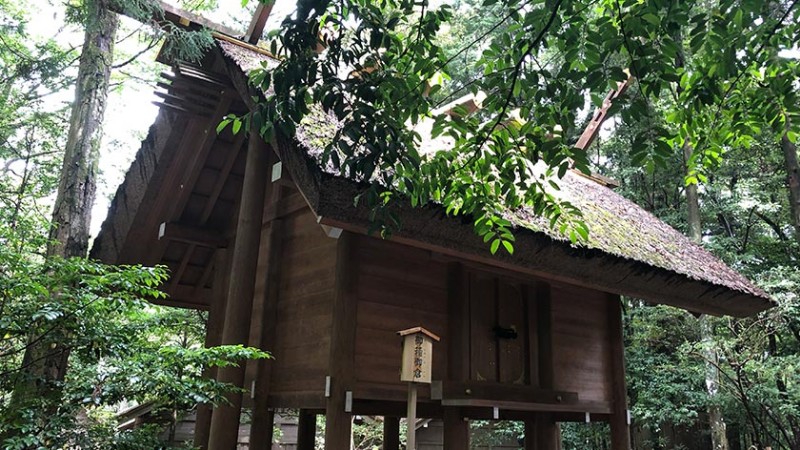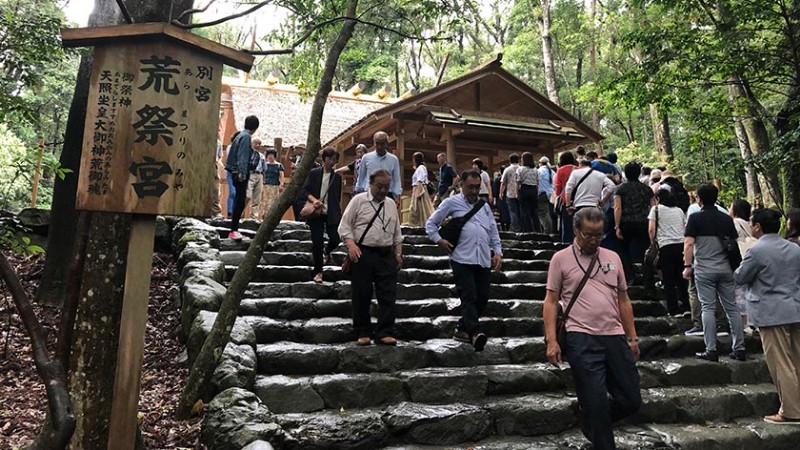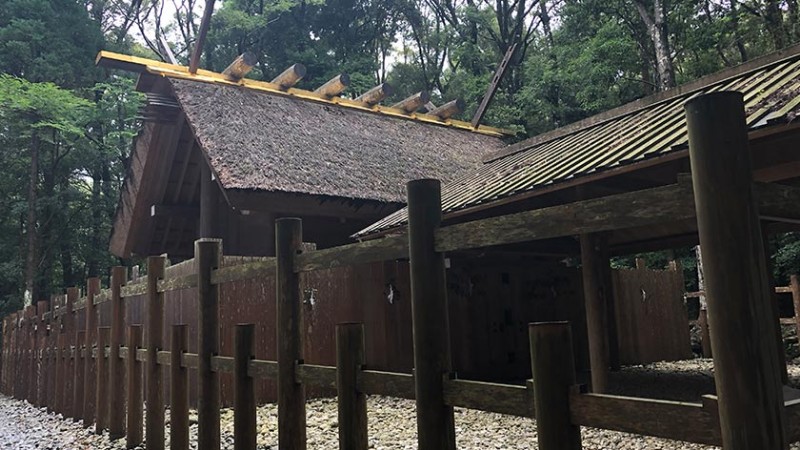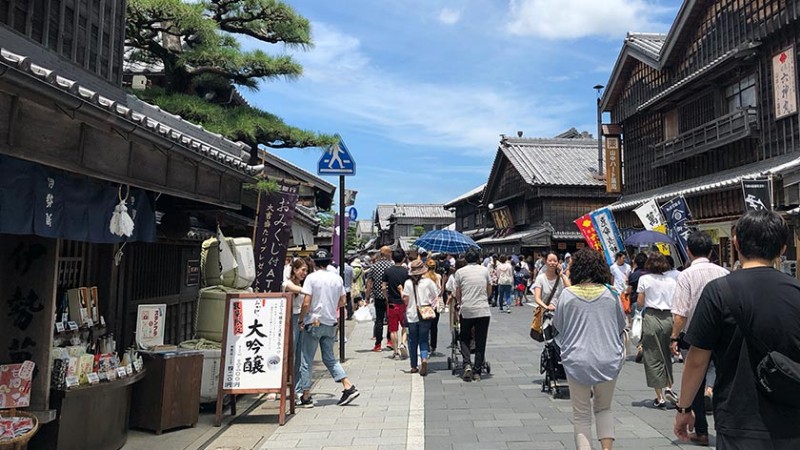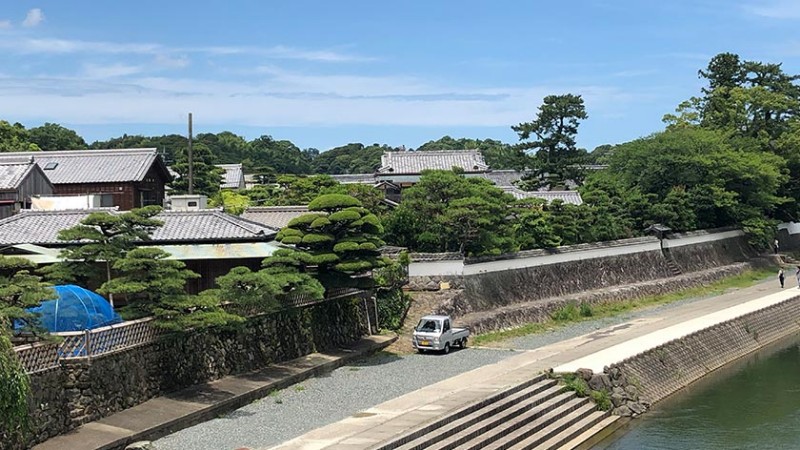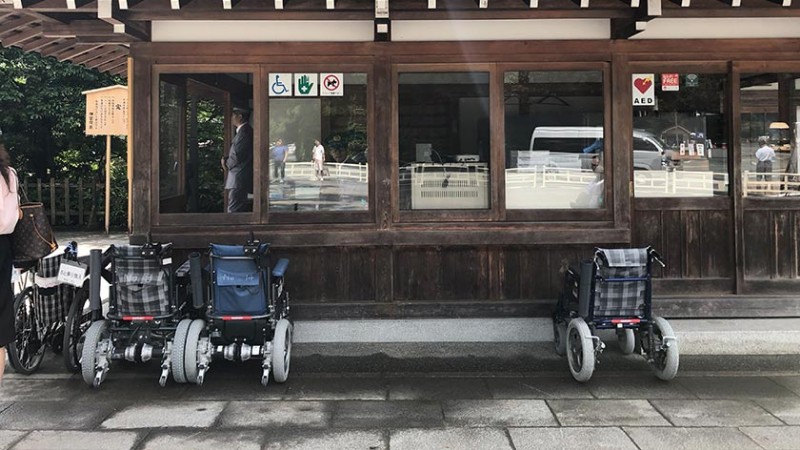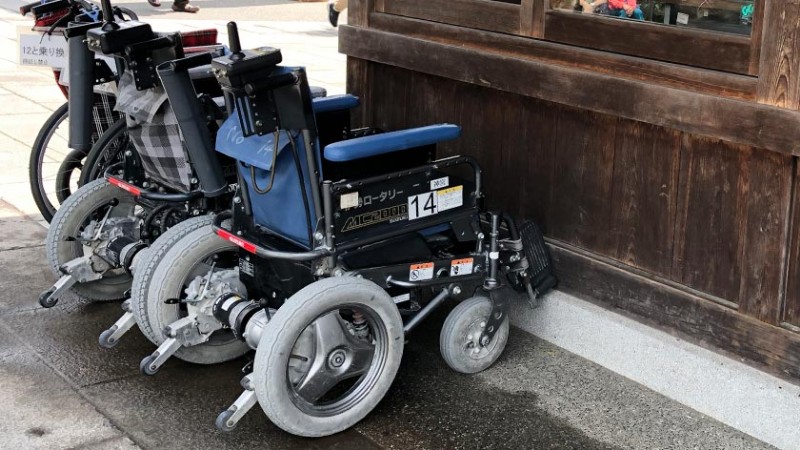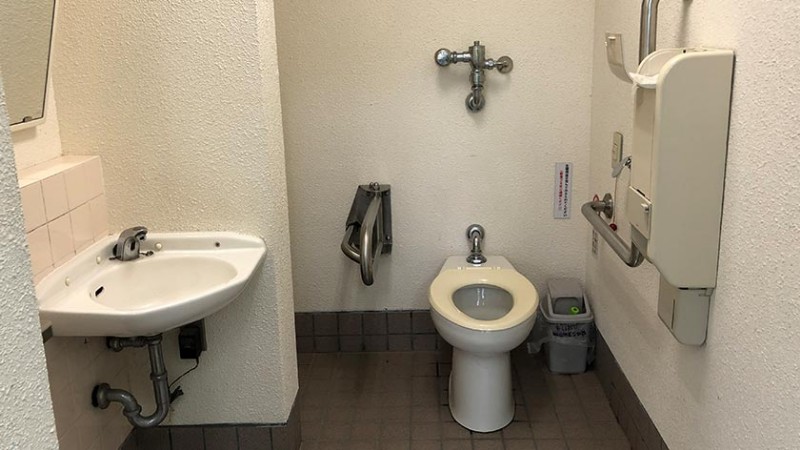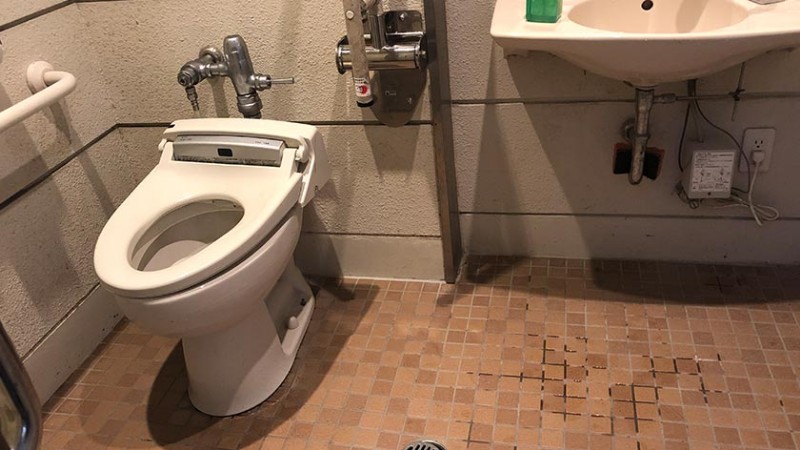- Overview

Japan’s most sacred site, the Ise Grand Shrine, is located about 1.5 hours south of Nagoya and a beautiful place to visit. While a few key locations are not wheelchair accessible, the shrine has put an effort into helping visitors with disabilities through accessible route maps and rental wheelchairs.
Background
While commonly referred to as the Ise Grand Shrine, or the Grand Shrine at Ise, the shrine in Mie Prefecture’s Ise city is officially known as just Jingu and is comprised of 123 smaller Shinto shrines centered around two main Shrines – Naiku (Inner Shrine) and Geku (Outer Shrine). Ise Grand Shrine is one of the oldest and most prominent shrines in Japan and is dedicated to the worship of the sun goddess Amaterasu Omikami, who is said to dwell at the shrine. The Sacred Mirror, one of Shinto’s three sacred objects, is said to be housed in the shrine. During the Edo period, it is suggested that 1 in 10 Japanese went on a pilgrimage to the shrines, called Okage Mairi, causing the shrine and town to flourish.
As one of Shinto’s holiest and most important sites, access to both shrines is strictly limited, and the public not allowed beyond sight of the thatched roofs of the central structures, which are hidden behind four tall wooden fences. The buildings are made of solid cypress wood, using joined wood instead of nails and are rebuilt every 20 years – the next rebuilding will take place in 2033.
The Imperial Family are believed to be direct decendants of the sun goddess Amaterasu Omikami and the chief priest or priestess must come from the Imperial House of Japan. Currently Emperor Akihito’s daughter, Sayoko Kuroda, is the high priestess.
Both shrines are open all year round and free to enter. The hours vary as follows:
5:00 to 18:00 (January to April, September)
5:00 to 19:00 (May to August)
5:00 to 17:00 (October to December)The Outer Shrine – Geku
The Outer Shrine was established around 1500 years ago and is dedicated to Toyouke Omikami, the Shinto deity of food, housing and clothing, who provides food for Amaterasu Omikami. The shrine was originally called Toyouke Daijingu and is traditionally visited before visiting the Inner Shrine.
The main sanctuary is a short walk from the entrance through a forest of tall trees. The building is surrounded by a number of fences and visitors are only allowed beyond the outermost fence. Withing this area, photography is forbidden.
There are a number of smaller shrines including those dedicated to the gods of wind and earth. A small museum is located near the entrance.
The Inner Shrine – Naiku
Formally known as Kotai Jingu, the shrine is said to have been established 2000 years ago and is dedicated to Amaterasu Omikami. The buildings have the appearance of ancient rice graineries and maintain a style that shows no influence from mainland Asia. Before entering the grounds, visitors pass over Isuzugawa River via Uji Bridge. The Torii Gates at either end of the bridge are made from the main pillars of the previous sanctuary.
Like the Outer Shrine, the Inner Shrine consists of simple wooden buildings along a gravel path through an old forest. Before the main shrine, visitors can purify themselves in the Isuzugawa River. The main shrine is also not allowed to be photographed and is mostly hidden by fences.
Getting There
The most common way to get to Ise City is via the Kintentsu Train Line from Nagoya to Ise. The common express trains are wheelchair accessible but take about 30 minutes longer than the Special Express trains. Unfortunately, only a few of the Special Express trains are wheelchair accessible. So, wheelchair users will either need to take a regular express train, or wait for an accessible Special Express train.
Once in Ise, the Outer Shrine is a 10 minute walk from Ise City Station. Getting to the Inner Shrine requires taking the bus, but numerous buses run between the shrines. Blue “CAN” buses are all wheelchair accessible, and most standard city buses are accessible as well.
Accessibility
While it is only available in Japanese, an accessible map is available online (download a version PDF here) or in paper format from the front gate of the shrine. Even without Japanese language ability, the map is fairly easy to understand and indicates accessible routes and toilets.
The biggest problem for those with mobility challenges is the gravel used on the paths. While it is not deep, it will likely be difficult for those using manual wheelchairs or with difficulties walking.

However, the shrines offer power wheelchairs with large wheels which are free to borrow from the front gate. The only downside is that the control stick is designed for a caregiver to drive and located on a rear handlebar. So they are impossible to operate without help.

Both sites have wheelchair accessible toilets (though they aren’t particularly very nice).

The Outer Shrine – Geku
The Outer Shrine is smaller, but also more accessible. It has the same gravel paths as the Inner Shrine, but the distance is shorter and the main sanctuary is on ground level.

Only Takanomiya, which is up a flight of stairs, and Shimo no Mii no Jinja and Tsuchinomiya, which have one or two steps are inaccessible.

The Inner Shrine – Naiku
The Inner Shrine is a fair bit larger, which may make the trip harder. Though, there are a few places to rest.

Access to Isuzugawa River only has steps.

It is possible to take an alternate route to Aramatsurinomiya, but the path may not be obvious and when the shrine was reviewed no guard appeared to show the way like on the map! Even with an alternate route, it is only possible to look at Aramatsurinomiya from the bottom of a set of stairs.

The main sanctuary is also at the top of a long flight of stairs.

The building structure is nearly identical to the main sanctuary at the Outer Shrine, and visitors cannot go far past the first fence. So while it may not be accessible to wheelchair users, you can at least know what it looked like and that able-bodied visitors cannot see much more than disabled visitors due to the fences obscuring the view of the sanctuary itself.
There is also a small street called Oharaimachi near the shrine with souvenirs and restaurants that keeps the feel of an Edo Period town.

Conclusion
The Ise Grand Shrine is Japan’s most sacred shrine and relatively undiscovered by foreign visitors. It is nice to see the effort that has been put in to help travelers with disabilities via accessible maps and wheelchairs that can be borrowed. Though it would be nice if they had a few wheelchairs that could be operated independently. For those in Nagoya, it makes a great day trip. However, visitors coming from Tokyo may need to find accommodations as the trip takes a few hours.
- Access
No Records Found
Sorry, no records were found. Please adjust your search criteria and try again.
Google Map Not Loaded
Sorry, unable to load Google Maps API.
- Photos
- Reviews
- Nearby Hotels
- Comfort Hotel Ise is located just a 3-minute walk from the South Exit of Iseshi Station. Restaurants and bars are only a short walk from the hotel, and The Outer Read more...
Have a question?
We try our best to provide information to a wide audience. But everyone has different needs.
If you have some specific questions about this listing, come join us on Tabifolk in the Japan group and we will get you the information you need!
Share your pictures of your trip or look up the accessibility of your next location with SIM cards or pocket WiFi!

